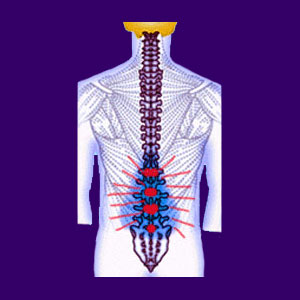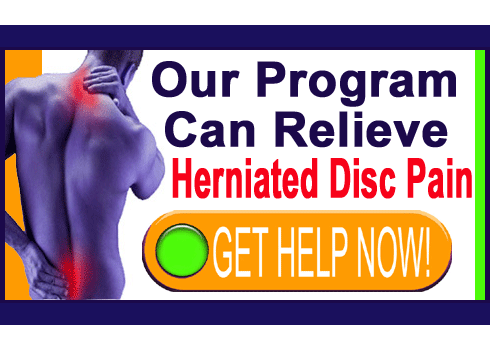
Finding good quality and objective back pain information can be a real challenge for any patient. Data, statistics, studies and research are rarely wholly accurate or objective. Much of the information on back pain is antiquated or highly controversial and contested, even within the traditional medical community. Add to this, the growing influence of alternative and complementary medical practices and you certainly have one big confusing mess of whom and what to believe when it comes to learning about back ache.
This editorial helps patients to decipher the information they may discover about the causes of their pain.
Back Pain Information from Doctors
Doctors are usually the first source of health information given to a patient. After all, most patients rely on their medical doctor to inform them about their diagnoses and prognoses for any health concern. Doctors are also business people and are known to specialize in some particular type of procedure or treatment. What this leads to is a tendency for patients to gravitate towards the doctor’s treatment recommendations without taking time to learn about alternative options.
Most patients do not even seek a second opinion for their back pain conditions. This can be incredibly costly, especially when surgery or other risky and invasive therapy is recommended inappropriately.
While the overwhelming majority of doctors are ethical and moral professionals who only want to help their patients recover, there are still many problems with using your doctor as an exclusive source of back pain information. Some doctors are really out for the money and can recommend long-term symptomatic treatment regimens which will enslave a patient indefinitely, without curing any underlying condition. Other doctors recommend surgery for purely economic reasons, since operations are the proverbial big ticket item in medical science.
Many doctors also still subscribe to the nonsensical purely Cartesian notion of spinal abnormalities being responsible for almost all back pain syndromes. I guess they have not kept up to date on the recommendation offered by many medical associations not to use these spinal irregularities to diagnose pain. Finally, doctors have limited training in psychosomatic conditions and can not be relied upon to differentiate between truly physical anatomical conditions and those sourced by a psychoemotional causation.
Back Pain Information from Literature
Whether the patient reads printed books, magazines or internet articles, there is no shortage of information available about the multitude of back pain conditions. Many of these articles are written by doctors and therefore, all the rules and cautions of the above section still apply. A good book or article will sell a patient on a treatment option just as convincingly as a doctor can do in person in their office.
Most large websites are run by medical groups or huge medical corporations. This definitely leads to one sided articles extolling the benefits of therapy options which just happen to be the specialty of the site owners.
Advertising is also a powerful source of spine pain information, although once again, that information will likely to have a complete lack of objectivity, since it is actually designed to sell. Patients, be careful what you believe without investing time and effort into additional research of your own.
Back Pain Information from Laymen
Everyone has heard tons of horror stories about back pain. Tales of slip and fall accidents, car crashes, work-related conditions, herniated this, slipped that, degenerated whatever. The list goes on and on.
Almost everyone we know has been affected by back pain in some facet of their lives. Either they have had it, still have it, care for someone with it, know someone with it or have some similar connection to it. There is no doubt that dorsopathy is ingrained in our minds, our hearts and our society.
Talking to people about back pain is one source of information, but once again, this method can have many drawbacks. Personal views on back pain usually come from one of the 2 above sources, so yet again, cautions apply.
In addition, people often do not have the background anatomical knowledge of pain to truly understand what is causing symptoms in many cases. Folklore and old wives tales are often accepted as good advice for pain conditions, right alongside advice learned from the latest in medical research. Peoples’ natural tendencies often impart an unintentional nocebo effect in their conversations concerning back pain. We hear horror stories and can instantly imagine the worst possible situation when we discuss spinal issues with others.
Objective Back Pain Information
It has always been our goal to provide a comprehensive and objective view about the diversity of back pain problems. This website is my attempt to provide this service to you free of charge and free from economic motivation. We have been accused by many in the medical profession as being a person who tends to think psychosomatic, rather than physical. Well, we can agree with this to some extent, since many cases of chronic pain has been proven countless times to be psychoemotional in nature. It makes sense to think psychological, rather than physical in these circumstances.
In addition, the medical treatment community has had their chance to fix back pain using their insistence on physical causes and traditional treatments. Has any of this worked? Mostly not.
Back pain is an epidemic condition which grows by leaps and bounds every year. It is obvious that the diagnostic and treatment procedures often do not reflect the actuality of the causative conditions.
We are not an extremists. We do believe, unlike others in the mindbody field, that back pain can surely be the direct result of a physical process or injury. We have seen it and we have experienced it. However, we do believe that there is a middle ground in acknowledging pain that can come about equally from physical and psychoemotional scenarios.
On a final note, it has been said many times that the scales of justice must swing both ways before balancing out. Well, the scales have been tipped to the medical anatomical perspective on back pain information for long enough. It is only fair that they might swing back hard towards the psychological perspective before finding a happy medium in between the two. If we can assist this swing to occur, we will. We must.





